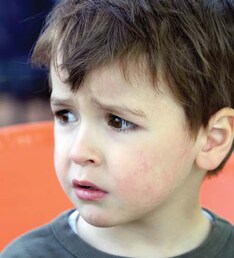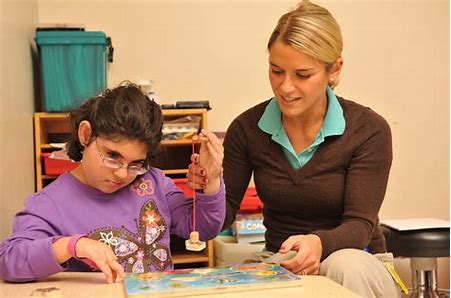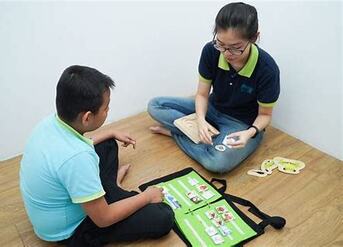What is the most concerning or destructive thing that is going on right now in your child’s world? Where to look for HELP?
Note: Read more about Who May Help in UNIT 7, SECTION 1 – WHO MAY HELP US? OTHER THERAPIES; ABA, CBT, DIR/Floortime, OT, PECS
The following THERAPIES (ABA, CBT, DIR/Floortime, OT, PECS) are described without intent, or suggestion of status or effectiveness.
Therapies are often used in conjunction with other programs. Parents often engage in the first available program, depending on their level of need. They may also neglect to inform or consult the child’s primary physician that this is taking place. Consequently, there can be confusing ‘outcomes’ as the following anecdotal family stories reveal. Separating ‘programs’, one from another, becomes difficult, because they are often intricately intertwined.
The following therapies are described in alphabetical order, without intent or suggestion of status or effectiveness –
Luker, S. (2024) UNIT 7-1, WHO MAY HELP US? OTHER THERAPIES, Section 1 (Continued); ABA
- Applied Behavior Analysis (ABA) is a well-known treatment approach for people with Autism Spectrum Disorder (ASD). ABA has become widely accepted among health care professionals and is used in many schools and treatment clinics. ABA encourages positive behaviors, and discourages negative behaviors, in order to improve a variety of skills. The child’s progress is faithfully tracked and measured.
Typically, this therapy requires a long-term commitment. For a child under three years old, you can expect to spend from 26 – 30 hours a week, in the home setting. Over three years old, you will spend from 30 – 40 hours per week. ABA program age range is from 2 – 12 years old. Many insurance companies seem to be more familiar with this very intense type of behavioral therapy. Therefore, parents more often find the funding they need when ABA is part of the overall plan for their child’s intervention.
< My Thoughts > “…from 30 – 40 hours per week.”
A word of caution: Consider how having someone in your home 30 – 40 hours a week will affect you and the rest of the family. Parents are expected to be present during these sessions.
Kedar, I. (2012) – Our family kept juggling who would be home, who would work, who would drive the child to speech, occupational, and other therapies. And finally, as parents we wondered whether we could afford hired support.
For the first three years of our son Ido’s home-based program, my husband was the one who put his career on hold to stay home. All day long, little Ido was taken to the table in his room by instructors, who came and went throughout the day, and asked him to point to flashcards, or stand up and touch his head, or his nose. Ido was incessantly corrected, yet the behaviors persisted.
Rudy, L.J. (2020) believes that Behavioral Therapy, like Applied Behavioral Analysis (ABA), and similar therapies, have become the ‘gold standard’ ASD treatment with many school districts. ABA teaches critical skills in several settings – at home, at school, and at work.
< My Thoughts > “…have become the ‘gold standard’ ASD treatment…”
Applied Behavioral Analysis (ABA), and similar therapies have become the ‘gold standard’ for many reasons. My experience has been that children who have spent months, and even years, being taught ABA expect to see it continued, in the school setting.
Parents who have been pleased with the results they have seen and paid dearly for it, want that home program to remain in place, during their child’s school hours. Therefore, ABA has been one of the first programs included in the Special Education classroom; and, it has been accepted and endorsed by most leading insurance companies. But for many families, it is just too extreme.
Bonker, E. M. & Breen, V.G. (2011) – 12% Like many parents of special needs children, I set the goal to have her mainstreamed in our local public school. I asked them, “Would you rather pay a little more now or a lot more for special education until she is twenty-one?” I thank God they saw it my way.
For three years, from the ages of three through five, Elizabeth underwent an intensive program based on the theory of Applied Behavioral Analysis (ABA) in our home, therapists paid by our school district implemented the program, teaching Elizabeth basic skills like identifying colors and objects. They taught her in very small increments, with rewards for each accomplishment.
< My Thoughts > “… Elizabeth underwent an intensive (ABA) program...”
The Applied Behavioral Analysis (ABA) method was developed by (University of California at Los Angeles) UCLA’s Dr. Ivar Lovaas, a behavioral psychologist. Lovaas believed that social and behavioral skills could be taught, even to profoundly autistic children, using his method. For very young children, ABA is more like play therapy. For older children the therapist asks a child for a particular behavior. If the child complies, s/he is given a reward in the form of a tiny food treat, a high five, or other desirable reinforcer. Eventually, the reinforcer is phased out and the child is considered no longer challenged in this area.
2. Cognitive-Behavioral Therapy (CBT)
This Cognitive-Behavioral Therapy (CBT) program is being added, because the focus of this therapy is ‘Daily Living Skills’. Studies have shown that parents worry about their child’s total lack of motivation in this area.
CBT was originally used in the Mental Health Community, in addition to medication; for anxiety, phobias, specific fears, obsessive worrying, and compulsive behaviors. Now, this therapy is used for children with autism spectrum disorder, to help them address social issues, as well as learning daily living skills.
Luker, S. (2024) UNIT 7-1, WHO MAY HELP US? OTHER THERAPIES, Section 2 (Continued); CBT
This Cognitive-Behavioral Therapy (CBT) program is being added, because the focus of this therapy is ‘Daily Living Skills’. Studies have shown that parents worry about their child’s total lack of motivation in this area.
CBT was originally used in the Mental Health Community, in addition to medication; for anxiety, phobias, specific fears, obsessive worrying, and compulsive behaviors. Now, this therapy is used for children with autism spectrum disorder, to help them address social issues, as well as learning daily living skills.
A study by Rotheram-Fuller & MacMuller (2011), said that CBT was originally used for patients with extreme anxieties to include –
- Separation anxiety
- School phobias
- Specific fears & obsessive worrying
- Compulsive behaviors
The CBT therapy also has a pharmacological component. In addition to therapy, the patient receives antipsychotics, and/or antidepressants, to deal with underlying issues related to social problems. In this study, parents were also trained to work with their child, using relaxation and problem-solving strategies. Together, parent and child learned ways to combat their symptoms, by changing to more ‘positive’ feelings and thoughts about certain events and interactions.
Wood, J., & Fuji, C., et al. (2014) explored a study which compared cognitive behavioral therapy (CBT) with treatment-as-usual on a small group of 7-11-year-olds. They did a baseline before treatment; observing social communication and emotional regulation, among students. CBT therapy was designed to help the psychiatric disorders of pediatric Obsessive Compulsive Disorder (OCD), anxiety, and disruptive behavior disorder.
They say that many programs, that proceeded without the addition of anti-psychotic medication, were found to have a poor treatment response. in terms of generalization, and/or maintenance of desired skills. Consequently, that wasn’t an outcome they were looking for.
< My Thoughts > “…generalization and/or maintenance of desired skills.”
Hopefully, necessary generalization and maintenance of most learned skills can be achieved by all therapy programs. This means that the child, after participating in an intense and extensive program, would automatically use many or most of the skills, when outside of the ‘setting’ in which they were learned. Although, realistically some follow-up would be required from time to time to confirm generalization; and also, to keep improvements in place.
Krebs, G., & Murry, K., et al. (2016) studied young people with ASD and co-occurring Obsessive-Compulsive Disorder (OCD), but found that they did not respond as well to CBT therapy as their typically developing counterparts. Noted too, was that they had difficulties in generalizing the behavior principles from one situation to another. Also, the gains that were made, didn’t seem to be maintained long term, but there was not much follow-up, to show one way or the other. This study also discussed an ‘enhanced’ protocol.
< My Thoughts > “…’enhanced’ protocol.”
Apparently, there are modified CBT programs for those persons showing ‘more’ severe or resistant problems. Also, these programs seem to be more successful when they are ‘age appropriate’, and working within, or building on skills the person already has. In addition, all of this needs to work within an established, or ongoing therapy, which the person is receiving. One may be wise to ask for a ‘trial period’, before signing any commitments.
We call the model the “DIR/Floortime Model” – because the “D” part means we focus directly working on what the child needs’ like working on engagement or two-way communication. The “I” is focusing in on the child’s individual ways of dealing with sensory sensations, like being ‘over’ or ‘under’ reactive. The “R” is learning relationships that are tailored to the child’s nervous system; meeting them where they are, developmentally. All of this, makes DIR a special kind of play.
According to Dr. Stanley Greenspan, the originator of Floortime, it is based on finding the child’s natural interest. What do they like to do? This means keeping the child in a ‘receptive’ mode. When s/he is ‘stimming’, then use that as an opportunity to identify the motivation, and to deepen their engagement. Use building on their natural interest as a motivation, by doing what they enjoy. Retrieved online from – https://www.icdl.com/dir
The main purpose of DIR/Floortime therapy, is to help the child with social relationships, mutual interactions, and behavior; in a natural setting. It takes into account personality disorders, plus behavioral problems such as –
- Agitated and irritable moods
- Low adaptability
- Lack of self-caring ability
- Lingual complications
- Various learning disabilities
What makes DIR/Floortime play different from typical play, is that that both parent and child are having fun. Over time, the fun is in you challenging your child to meet six developmental milestones (respond, play, learn, speak, act,& move), to the highest level the child can accomplish. He or she may not be capable of all six initially, but eventually they will get there.” Retrieved online from autism.about.com/
Floortime is a comprehensive program for infants, young children and families facing a variety of developmental and learning challenges. The program is called Floortime because you follow the child’s lead, getting down on the floor when they do. The whole family can learn to join in the child’s world, thus leading them to join into the shared world the family lives in. This will help them master their functional and developmental capacities.
Here is one small example of beginning ‘shared attention’ and beginning ‘engagement’ which takes place on a little island (on the floor). The child is alone on the floor playing with his favorite toy when the cat-and-mouse game begins.
Someone (mom, dad, or sister) gets down on the floor with the child and engages them by touching the toy or placing some kind of obstruction (a hand) in front of the child’s movement. Eventually the obstruction is placing the toy behind a door. He looks back at you then gets up and bangs on the door.
Rudy, L. J. (2020) says that Social Skills Therapy, such as ‘Floortime’ (DIR/Floortime), and Relationship Development Intervention (RDI), and Social-Communication Emotional Regulation and Transactional Support (SCERTS) are developmental therapies. These are intended to work on building the ASD child’s emotional skills, relationship and bonding skills; as well as expanding their abstract thinking. She stresses that these types of therapies are usually paid for ‘out-of-pocket’, but eventually can be done by the whole family.
Luker, S. (2024) UNIT 7-1, WHO MAY HELP US? OTHER THERAPIES, Section 1 (Continued); OT
Occupational therapy teaches skills that help the person live as independently as possible. The role of the Occupational Therapist is to promote, maintain, and develop the skills needed by the autistic child to be functional at home, at school, and beyond. The length, and number of therapy sessions, per week, are determined by the child’s age and need; also, sessions will vary in time and setting.
Ambersley (2013) believes that sometimes it was just plain good fortune that we met the right people at the right time. Some examples of taking advantage of early intervention opportunities for Aaron included finding a good speech and language pathologist, and occupational therapist that worked extensively and primarily with children with autism.
Occupational therapy, physical therapy, speech and language, and social development were the four areas we targeted. We adapted our schedules to our son’s needs. These four windows of opportunity were the key to his long-term development.
Luker, S. (2024) UNIT 7-1, WHO MAY HELP US? OTHER THERAPIES, Section 1 (Continued); PECS
5. Picture Exchange Communication System (PECS)
PECS uses picture symbols (visual supports on cards, pages, or in books) to teach communication skills. The learner is taught to use picture symbols to ask for objects or activities, ask and answer questions, and have a conversation. In 20-30 minute sessions, children learn a communication system whereby they exchange different symbols with a partner, as a means to communicate a ‘want’.
Intended to increase speech, language, social and communicative development, PECS is for persons from 2 years to adult. Sometimes PECS becomes a part of a Speech Therapy Program, for the child with autism. PECS is often used by Speech/Language pathologists; therapists who specialize in treating language problems and speech disorders.
Picture Exchange Communication System (PECS) is a great tool in helping all nonverbal children with or without autism communicate without words. PECS is used in a variety of ways–starting with pictures–to allow the child to make choices and communicate his/her needs. When children can communicate and express their needs, behaviors often can be minimalized resulting in a much happier child.
At school, they started Sonny on the PECS system of communication when he was about 8 years old. At first we used the PECS graphics for the items but when he didn’t respond to them, we switched to pictures cut from ads. He is very much a visual learner so I can understand why he liked to see the real image.
The problem for Sonny was that he was not high-functioning enough, nor was he coordinated enough (fine-motor skills such as using pincher fingers…which ASD children often hate to do) to scan a selection of cards…make a choice that fit his needs…and present it to someone in exchange for the item. Too many variables for him, and (big AND) we didn’t know he was having undetectable seizures. Epilepsy was not on the radar at that time.
Once learners have progressed through all six phases of PECS training, they are fairly proficient in seeking their communication book, discriminating among pictures, constructing sentence strips, finding a communication partner, and completing the exchange. Retrieved online from – Picture Exchange Communication System: Steps for Implementation; P16; National Professional Development Center on ASD.
PECS can also be used through an iPad program or Augmentative/Alternative Communication (AAC) device. Retrieved online from – http://autism.about.com/od/treatmentoptions/a/PECS.htm
< My Thoughts > “…30 ‘exchange’ opportunities…”
The time involved in mastering the PECS system, depends on how it is presented, one-on-one, in a group, on an iPad; or all three. It also depends on how long it takes the individual to pass through each phase. Considering, that there are 5 to 6 PECS Phases through which to advance.
Siri, K. (2010) says that before the iPad came along, Alex had to rely on gestures, approximations, and PECS images to communicate his needs and wants. Alex would frequently melt down, and even turn aggressive towards himself, as he became exasperated with his inability to convey his requirements.
References:
Ambersley, K. (2013). Autism: Turning on the Light: A Father Shares His Son’s Inspirational Life’s Journey through Autism; eBook Edition.
Bonker, E. M. & Breen, V.G. (2011). I Am In Here: The Journey of a Child with Autism Who Cannot Speak but Finds Her Voice; eBook Edition.
Kedar, I. (2012). Ido in Autismland: Climbing Out of Autism; eBook Edition.
Krebs, G., Murry, K., et al. (2016). Modified Cognitive Behavior Therapy for Severe, Treatment-Resistant Obsessive-Compulsive Disorder in an Adolescent with Autism Spectrum Disorder; Journal of Clinical Psychology; V72:11, p1162-1173.
Luker, S. (2024); Know Autism, Know Your Child with < My Thoughts > by Sara Luker; Retrieved online from – www.sarasautismsite.com
Rotheram-Fuller, E. & MacMuller, L. (2011). Cognitive-Behavioral Therapy for Children with Autism Spectrum Disorder; Psychology in the Schools; V48:3.
Rudy, L.J. (2020). What is the Best Treatment for Autism?; Very Well Health Online; Retrieved online from – https://www.verywellhealth.com/the-best-treatment-for-autism-4585131/
Siri, K. (2010). 101 Tips for Parents of Boys with Autism: The Most Crucial Things You Need to Know; eBook Edition.
Wood, J., Fuji, C., et al. (2014). Impact of Cognitive Behavioral Therapy on Observed Autism Symptom Severity During School Recess: A Preliminary Randomized, Controlled Trial; Journal of Autism Developmental Disorders; V44, p2264-2276.
End of DAY TWENTY.
Note: DISCLAIMER – Autism ‘intervention’, as with the phrase ‘Early Detection / Early Intervention’, may simply mean to attempt an ‘action’, or attempt to ‘change a course’ or ‘trajectory’ of the person’s autism. Any expectation for a successful ‘change’ must have the cooperation of the participant, the parent, and/or the assigned therapist. Words such as, ‘intervention’, ‘treatment’, ‘therapy’, ‘service’, or ‘program’ imply ‘cure’, or ‘long-term’ positive effect. That is NOT my intention here, and all information is presented without intent or suggestion of status or effectiveness.
Note: Excerpts from the books – (13% indicates location in the Kindle version of the eBook, instead of page numbers).
Sharing of my website and BLOG Comments welcomed. Thank-you to those of you who have sent comments... much appreciated!
Regards,
Sara Luker






 RSS Feed
RSS Feed